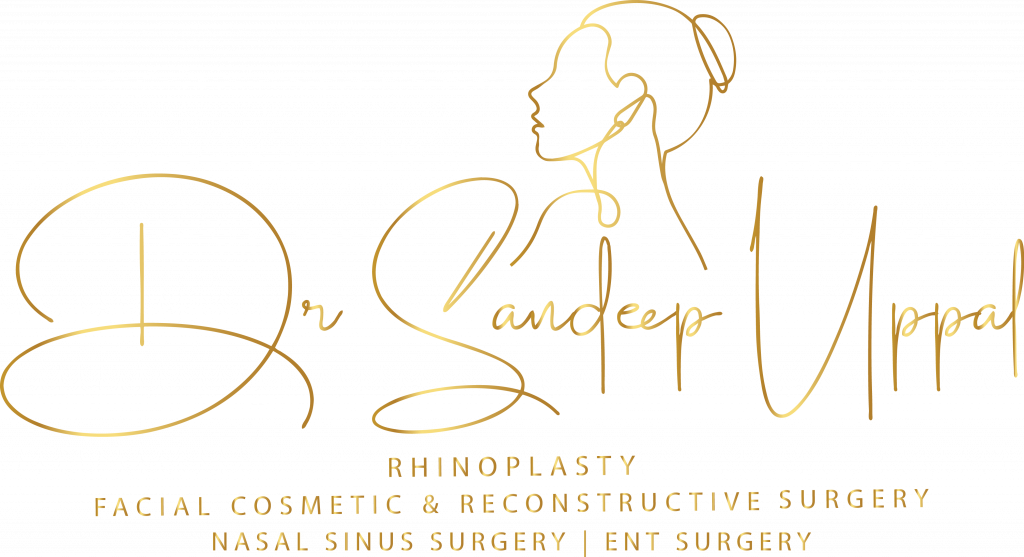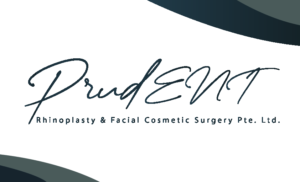Why Should I Choose Dr Sandeep for My Septoplasty and Rhinoplasty?
WHY SHOULD I CHOOSE DR SANDEEP FOR MY SEPTOPLASTY AND RHINOPLASTY? In the realm of Septo-rhinoplasty, only a select few surgeons rise to the pinnacle of their profession, and Dr Sandeep is undoubtedly among them. His contributions to the field are not just limited to surgical procedures but extend to academic and educational domains as well. DUAL FELLOWSHIP Dr Sandeep is the only surgeon in Singapore and amongst a handful of surgeons in the world with dual fellowship training in Facial Plastic Surgery and Advanced Rhinology (Sinus surgery and Nasal allergy management), giving him a significant edge in providing a comprehensive one stop solution for all your nose related concerns. PATIENT-CENTRIC APPROACH What truly distinguishes Dr Sandeep is his dedication to his clients. He believes that every individual deserves a tailored approach, ensuring that the results are not only aesthetically pleasing but also harmonious with the client’s unique facial structure. His consultations are thorough, ensuring that every concern is addressed, and every aspiration understood. COMMITMENT TO PERFECTION Dr Sandeep’s surgical approach is characterized by meticulous attention to detail, a deep understanding of aesthetic balance, and a relentless pursuit of perfection. While he acknowledges the inherent challenges in promising absolute perfection, his clients are always assured of his best effort, backed by years of experience and a genuine passion for the craft. ACADEMIC EXCELLENCE Dr Sandeep completed his PhD in topic related to Facial Plastic Surgery from the University of Leeds, UK in 2012. During his PhD he determined the genetic and molecular basis of Pachydermoperiostosis, a condition that presents with premature facial aging. His PhD resulted in a first author publication in the highly acclaimed journal Nature Genetics. PEER REVIEWED PUBLICATIONS Dr Sandeep’s contributions to 35 peer-reviewed articles, many book chapters and authorship and editorship of 2 books highlight his dedication to research, innovation, and the continuous improvement of surgical techniques. SPEAKING ENGAGEMENTS Beyond his written work, Dr Sandeep is a sought-after speaker, sharing his expertise at renowned conferences worldwide. His presentations are always met with acclaim. His peers and budding surgeons alike look forward to his sessions, eager to absorb the knowledge he imparts. Dr Sandeep is proud to have been an invited speaker. and has chaired and moderated sessions in the following notable courses and conferences: American Academy of Facial Plastic and Reconstructive Surgery and 12th International Symposium on Facial Plastic Surgery, Dallas, USA. British Academic Conference in Otolaryngology (BACO), UK . Australasian Academy of Facial Plastic Surgery Annual Meeting. Joint International Meeting of Rhinoplasty Societies. Berlin, Germany. World Congress of Facial Plastic Surgery, Taipei, Taiwan . Chosum ageing face symposium, Seoul, South Korea. International Congress of Pan Asian Academy of Facial Plastic and Reconstructive Surgery, Yokohama, Japan. Master’s Symposium on Facial Plastic and Cosmetic Medicine. Seoul, South Korea . Rhinoplasty masterclass, Manila, Philippines. Comprehensive International Rhinoplasty Course, Riyadh, Saudi Arabia. International Facial Plastic Surgery Course, Bangalore, India. National Facial Plastic Surgery Course, Bangalore, India. Asian Facial Plastic Surgery Society Congress, Singapore. SELECTION OF RHINOPLASTY PRESENTATIONS Out of more than 110 presentations at international and national conferences and courses, some of his notable works on rhinoplasty include: Assessment and Management of Nasal Valve Collapse in Rhinoplasty. Septoplasty Techniques. Aesthetic Rhinoplasty. Asian Rhinoplasty. Under Projected Tip in Asian Clients. Augmentation, Reduction, Deviation in Rhinoplasty. Assessment and Management of Deviated Nose. Assessment and Management of Pseudo-hump Nose. Nasal Obstruction, Assessment and Management. Functional Septorhinoplasty Update. Peri-operative Care and Management of rhinoplasty Clients. Endonasal and External Approach Rhinoplasty. Inverted V Deformity: Prevention and Cure. Consideration of Race, Ethnicity and Culture in Rhinoplasty. RECOGNITION AND AWARDS Dr Sandeep’s excellence hasn’t gone unnoticed. Facial Reconstructive and Cosmetic Surgery (India) awarded him honorary Chair in Facial plastic surgery in 2023. He was also presented with Honorary fellowship of Korean College of Cosmetic Surgery in 2021, a testament to his unparalleled skills and contributions and underscores his reputation in the medical community. Out of the numerous awards and traveling fellowships awarded to him, Dr Sandeep is particularly proud of the Claus Walter Prize for Academic Excellence for securing the highest marks of all international candidates in the examination conducted by the American Board of Facial Plastic Surgery for International Board of Facial Plastic Surgery Certification in Facial Plastic Surgery. In essence, Dr Sandeep’s philosophy and approach to rhinoplasty are a blend of technical mastery, academic contribution, and a deep-seated commitment to patient well-being and satisfaction. He stands as a beacon of excellence in the field, inspiring both his peers and the next generation of surgeons.
Why Should I Choose Dr Sandeep for My Septoplasty and Rhinoplasty? Read More »


